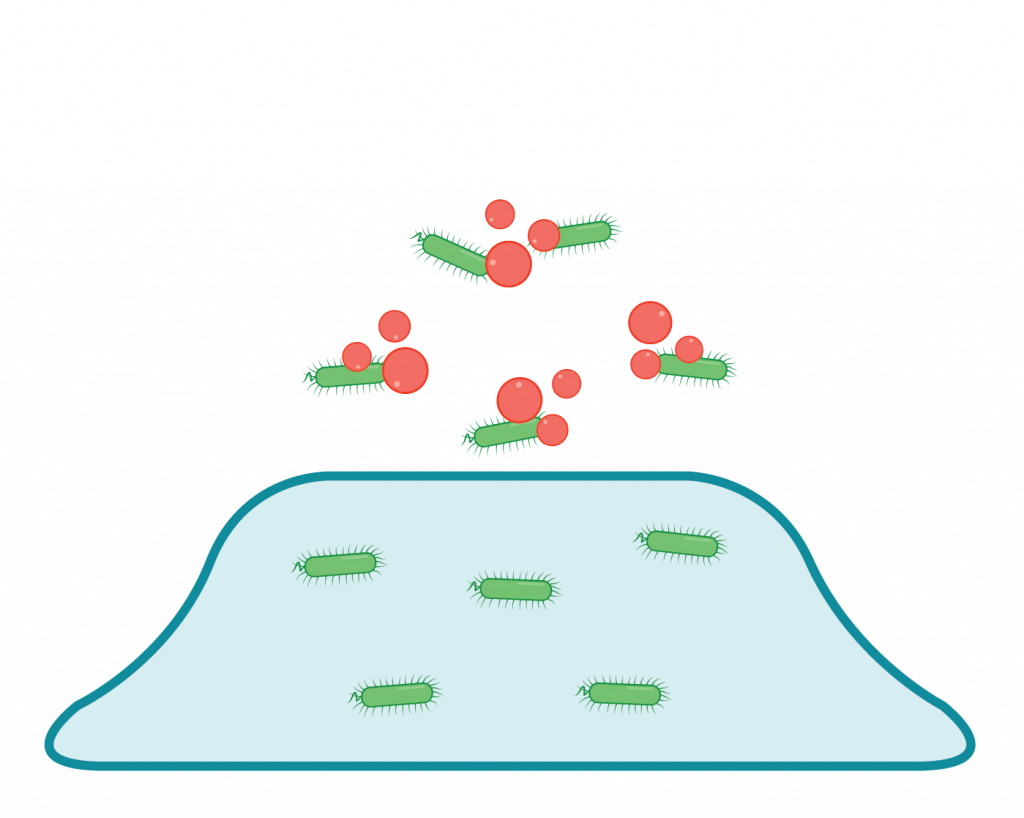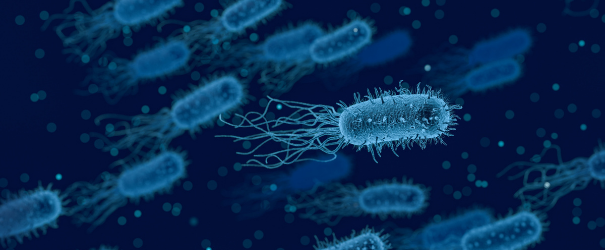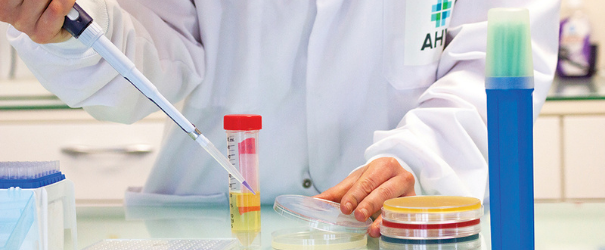
FORMATION AND SPREADING OF BIOFILMS
Biofilm development is well organized and during its development intercellular and intracellular signalling occurs. A panel of genes/proteins are upregulated as well as downregulated for attachments of bacteria onto host cells. Biofilm can be formed within 24 hours after attachment. There are five main steps for the formation and spreading of biofilms (see figure 2). After the attachment phase, the bacteria will start to form a (mono)layer and produce a polymeric matrix layer for protection. In the last stage, some cells or parts of the mature biofilm start to detach and disperse into the environment as planktonic cells again. They can start a new cycle of biofilm formation elsewhere in the body (Guzmán-Soto et al., 2021).

Figure 1: Schematic representation for single bacterial species biofilm formation on a solid surface (AHV International, based on Guzmán-Soto et al., 2021)
BIOFILM IN RELATION TO ANTIMICROBIAL RESISTANCE (AMR) DEVELOPMENT:
Because of the dense polymeric matrix of biofilms, antibiotic penetration will be limited, a gradient will be formed under the bactericidal critical level, resulting in faster development of microbial resistance (Philip S. Stewart et al., 2002 / Niels Høiby et al., 2009). These subinhibitory concentrations of many antibiotics are able to enhance biofilm formation by pathogens (Kaplan, 2011). Therefore, approximately 80% of chronic and recurrent microbial infections in the body are due to bacterial biofilm. Microbial cells within biofilms have shown to be 10–1,000 times more antibiotic resistant than the planktonic cells (Abranches J., 2011).







